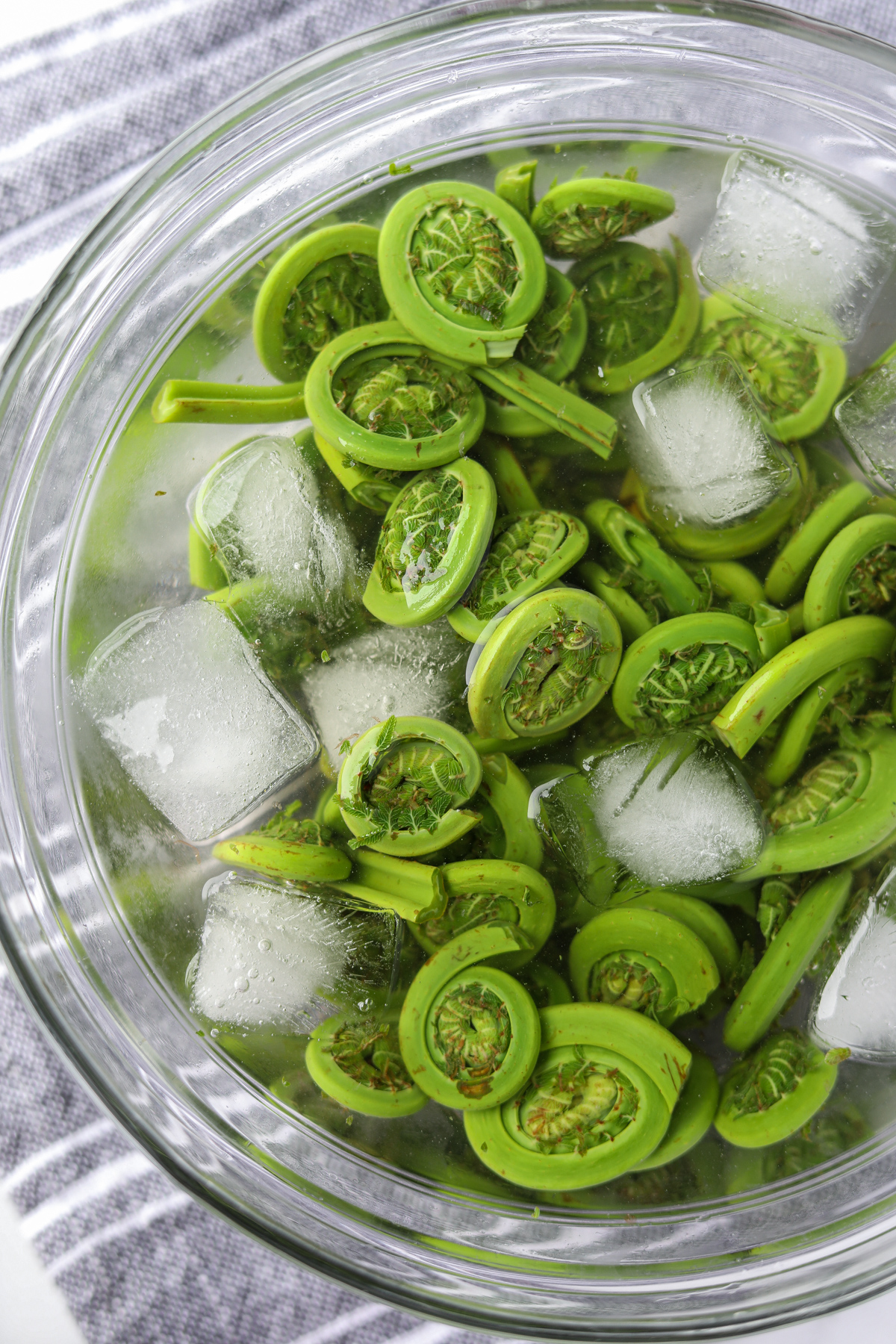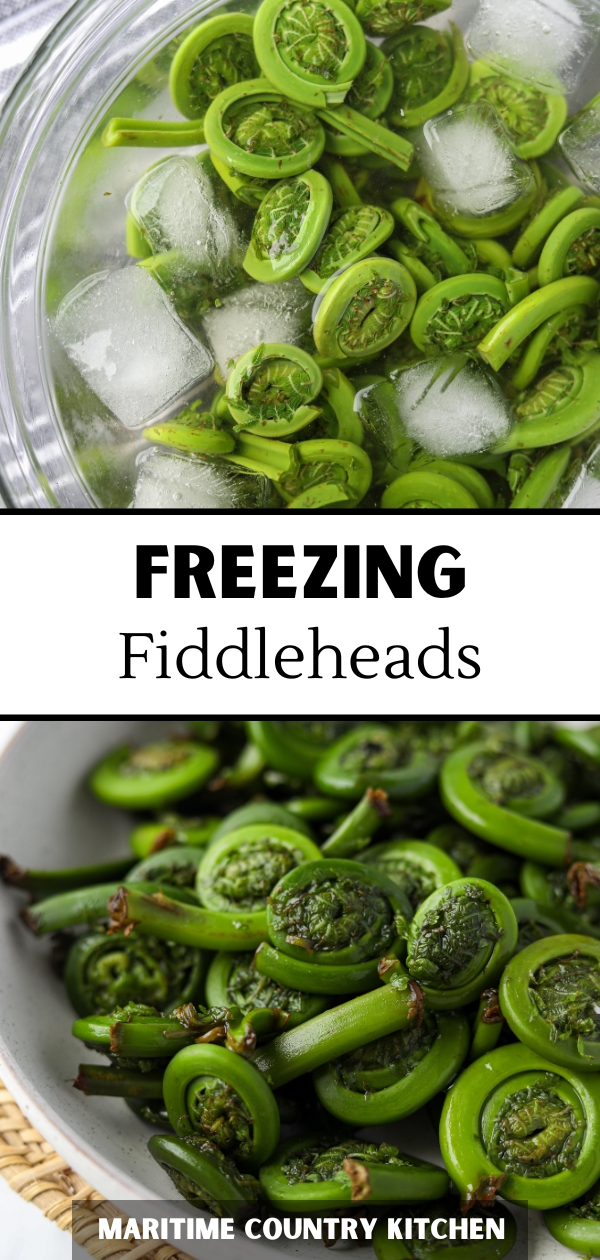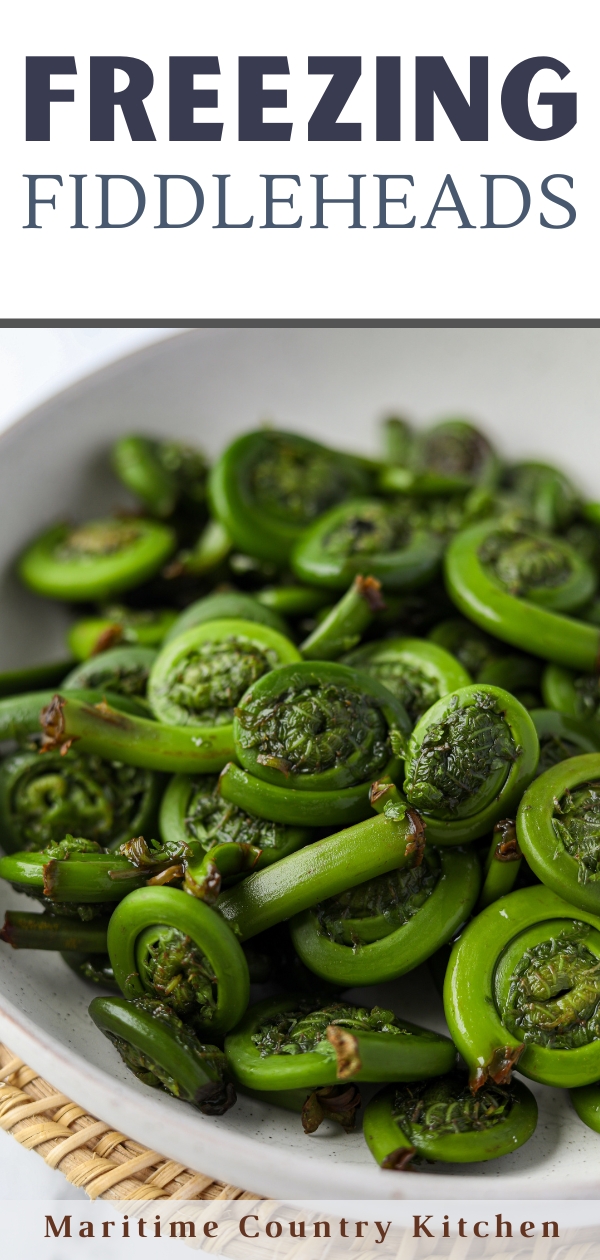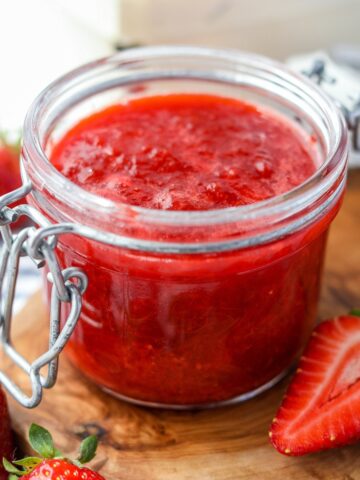Fiddleheads are the coiled fronds of the Ostrich fern and are a popular Springtime delicacy in the coastal Northeast of North America. Learn how to freeze fiddleheads to preserve their unique flavor all year long!
And don't forget to check out the full guide on how to cook fiddleheads too!

What are Fiddleheads?
Fiddleheads are the edible shoots of the Ostrich fern (Matteuccia struthiopteris) that appear in the early Spring months (late April through to early June). Also known as fiddlehead ferns, they get their name from taking on the appearance of the head of a fiddle or violin, with their spiraled heads and a long stem.
Fresh Fiddlehead ferns can be found during the growing season in Maine, Nova Scotia, and New Brunswick, although they are also popular in Australia, Japan, and many European countries. They grow best in damp, cool areas like riverbanks and forests, making the coastal Northeast a hotspot for these tasty foraged treats.
They taste very similar to asparagus, or very fresh green beans. After a 10-15 minute steaming or boiling, fiddleheads can be sauteed in butter (or olive oil) as a simple side dish, used to make fiddlehead soup, or included in a delicious quiche. They can also be saved for later use by blanching, freezing, and storing them to use throughout the year.

Where to Buy Fiddleheads
Fresh fiddleheads are a delicious delicacy with a short seasonal window. They are typically available in the coastal Northeast of North America (as well as many regions in Europe and Australia) during the Spring season.
Here are a few places you may be able to find them for sale:
- Farmers markets
- Roadside stands
- Local foragers
- Health food stores
- Grocery stores in Maine, New Brunswick, and Nova Scotia.
- Online specialty suppliers
How to Clean Fiddleheads

- If still in place, remove the brown papery husk from the head.
- Trim ¼-½ inch of the stem off the bottom of each fiddlehead, effectively removing the browned edges.
- Place the fiddleheads in a bowl of clean water to soak for 5-10 minutes.
- Rinse well, then drain the fiddleheads and rinse 2-3 times, or until the water runs mostly clean.
- Optionally, use a salad spinner. Spin the greens gently, rinsing with cool water until the water runs mostly clear.
- Shake or spin to remove excess water.
- Proceed with steaming or boiling to cook, or blanch for freezing.
How to Blanch and Freeze Fiddleheads


Step one: Bring a large pot of water to a rolling boil, and add the trimmed and cleaned fiddleheads. Boil for 2-3 minutes.
Step three: Drain and add the hot fiddleheads to a bowl of ice water.

Step three: Transfer the blanched fiddleheads to an airtight container or a freezer bag. Label with the contents, date, and cooking instructions.
Step four: Freeze for up to 1 year. For safety reasons, make sure to steam them for 10-12 minutes (or boil for 15 minutes) after thawing.
Freezer bags: You can use a freezer-safe plastic bag, or reusable freezer bags if you're looking to reduce waste.
Safety Tips
Health Canada has given some guidelines for cooking fiddleheads safely. Fiddleheads are often wild-foraged and can cause food poisoning if not prepared properly, or if you eat undercooked fiddleheads.
- Use only Ostrich fern fiddleheads (Matteuccia struthiopteris).
- Purchase them from a reputable source, or forage with the help of an experienced local guide.
- Clean them thoroughly, rinsing well with clean running water until dirt and debris are removed.
- Use the proper cooking process. Steam for 10-12 minutes, or boil for 15 minutes (even if using previously frozen fiddleheads).
See my How to Cook Fiddleheads guide for more information.
If you loved this method for freezing fiddleheads let me know by leaving a 5-star review in the recipe card, OR tag me on Instagram @maritimecountrykitchen!

Equipment
- Salad spinner or colander
- Freezer bags or containers
Ingredients
- Fiddlehead ferns
- Boiling water
- Ice water 3 cups of cold water + 2 cups of ice cubes
Instructions
Cleaning
- Remove the brown papery pieces from the head.
- Trim ¼-½ inch of the stem off the bottom of each fiddlehead, removing the browned edges.
- Place the fiddleheads in a bowl of clean water to soak for 5-10 minutes.
- Rinse well, then drain the fiddleheads and rinse 2-3 times, or until the water runs mostly clean. (Or use a salad spinner).
- Toss (or spin) the greens gently, rinsing with cool water until the water runs mostly clear.
- Drain or spin to remove excess water.
Blanching
- Bring a large pot of water to a boil (unsalted or salted water - according to your preference).
- Add the fiddleheads and cook for 2-3 minutes.
- Drain the partially cooked fiddleheads and add them to an ice bath to stop cooking.
- Use a slotted spoon or colander to remove the blanched fiddleheads from the basin of ice water.
- Transfer into freezer-safe containers or freezer bags.
- Label with the contents, date, and instructions.
- Freeze for up to 1 year in a deep freezer, or up to 6 months in a small freezer.
- When ready to prepare: thaw, and steam for 12 minutes, or boil for 15 minutes before eating.
Notes
- See the guidelines from Health Canada before freezing or consuming.
- Only fiddleheads from the Ostrich ferns are safe for eating (Matteuccia struthiopteris).
- Only buy from a reputable source, or forage with an experienced local guide.
- Clean them thoroughly, removing the brown husk and rinsing well under cold running water.
- Cook according to safe process times: 10-12 minutes when steamed, or 15 minutes when boiled. This includes fiddleheads that have been previously blanched and frozen.








Leave a Reply